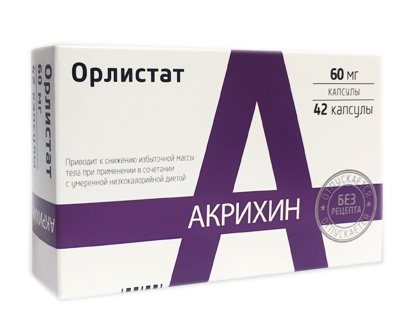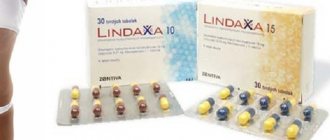A low-energy diet and daily exercise remain the mainstays of treatment. However, for many patients, tangible results are difficult to achieve. This is usually caused by hormonal imbalances in the body or poor motivation, the inability to adhere to the regime for a long time. If it is not possible to lose 5 kg in 3 months, then additional medications are prescribed. Read more about drugs for the treatment of obesity in our article.
Why does obesity develop?
We will not discuss the reasons for gaining excess weight, there are a lot of them. But everyone who really wants to get rid of the hated kilograms must admit to themselves the following:
- It is completely pointless to justify your excess weight with a “wide” bone, and to explain nightly raids into the kitchen as stress or depression.
- Overweight and obesity are diagnosed using body mass index (BMI). The indicator can be calculated using an online calculator and checked against the norm table (there are tables by age and gender).
- Obesity is a chronic disease that additionally provokes a host of other ailments (stomach and heart diseases, atherosclerosis, diabetes, etc.).
- Diet, even long-term, and physical activity, at best, provide only a temporary reduction in body weight. To maintain the achieved weight levels, nutritional adjustments and physical activity should become a principle of life, and not a temporary attitude.
- The goal of treatment is not only to reduce weight, but also to at least stop the progression of diseases that have already appeared due to excess weight.
- You shouldn’t assume that a “magic” anti-obesity pill will give you back your beautiful figure in an instant. Most of the newest medications for treating obesity usually lead to a loss of only 5-10% of the initial weight. In this case, drug treatment continues for several months, and sometimes years.
- No one canceled diet and physical activity. Only 3 rules will help you get rid of obesity and maintain weight at the achieved “heights”: a low-calorie diet and no breakdowns, daily exercise and only then taking special medications.
- Anti-obesity medications, like any other medications for obesity, have contraindications and side effects. The use of anti-obesity pills should be approved by a qualified physician.
Important! Drug therapy for overweight and obesity is advisable if the patient strictly adhered to the regimen (diet and physical activity) for 6 months and was unable to reduce his weight, initially BMI > 30 kg/m2 or BMI > 27 kg/m2, but concomitant conditions were diagnosed diseases.

Why do the hated kilograms come back so quickly? It's simple. During exhausting diets or training to the point of complete powerlessness, the body feels a “threat” and experiences stress. In such a situation, survival processes are launched, the body accumulates energy in the form of fat cells. Of course, breakdowns are not excluded: someone who has lost weight again begins to eat to their fill, and the sofa becomes their favorite place. Do you feel like you are boiling with resentment or somewhere deep in your soul do you admit to yourself that all of the above is the pure truth? If, after all, the recognition of reality has taken place, then you are ready to familiarize yourself with very serious information regarding the effectiveness of modern drugs for obesity.
Treatment of fatty liver
To reduce fat deposits in the liver, a standard approach is used - limiting fatty, high-calorie, spicy, fried foods and regular physical activity. At the same time, fasting and rapid weight loss, too strict diets have the exact opposite effect, leading to the death of liver cells.
Fructose also has a harmful effect on the liver, which must be taken into account when used as a sweetener or when including excess sweet fruits and honey in the menu.

Of the drugs recommended for weight control, orlistat has been found to be most effective for fatty liver disease. It is combined with statins (Atokor, Zocor) in cases of pronounced changes in blood lipid composition. To improve the condition of liver tissue, hepatoprotectors are widely used - Essentiale, Gepagard Active.
We recommend reading the article about the hormone ghrelin. From it you will learn about how the hormone ghrelin works, its role in the body, analysis for determining the hunger hormone, ghrelin-based drugs and vaccines against obesity.
And here is more information about nutrition for hyperparathyroidism.
For drug therapy of obesity, drugs of central (Reduxin) and peripheral (Xenical) action are used. According to indications, agents that regulate metabolic processes (Victoza) and chemically inert (Guarem) can be prescribed. It is not recommended to use either medications for weight loss or dietary supplements without prior examination. With concomitant fatty liver, hepatoprotectors are additionally needed.
Anti-obesity drugs: research, effectiveness, side effects
In recent years, serious changes have occurred in the treatment of obesity, and this is not counting all kinds of dietary supplements, which in our country are not recognized as drugs and often contain very harmful compounds. So, there are 5 main medications used in the world that are approved by the FDA (American Food and Drug Administration). These are orlistat, lorcaserin, liraglutide, combinations of buproprion - naltrexone and phentermine - topiramate. All of these drugs affect different processes that regulate appetite, energy expenditure and fat absorption. All of them, of course, have side effects. And most importantly, they have different levels of effectiveness, proven by many studies. These medications have one thing in common: they are suitable for long-term and, if necessary, permanent use. For short-term use, phentermine and diethylpropion may be prescribed.

Orlistat
Orlistat (Xenical) has been used to treat obesity since 1999 and has been fairly well studied. By slowing down the synthesis of the lipase enzyme in the gastrointestinal tract, it reduces the absorption of fat from the intestines and thereby promotes weight loss. A regimen of orlistat 120 mg three times a day reduces the absorption of fat from the intestine by 30%, but this treatment must be prescribed by a doctor. It is safe to take 60 mg of orlistat (Alli) on your own. This dose can maintain weight at the level achieved through diet and exercise.
To evaluate the effectiveness of Xenical, including in patients with diabetes, a large 4-year study, XENDOS, was conducted.
| Indicators for comparison | Orlistat 120 mg 3 times a day. | Placebo, diet and exercise. activity * |
| Weight loss | 5.8 kg | 3.0 kg |
| Weight loss in people with type 2 diabetes, prediabetes | 5.7 kg | 3.0 kg |
| Number of people who have lost weight by 5-10% | big | significantly less |
| After 4 years, 5% weight loss | 52,80% | |
| After 4 years, 10% weight loss | 26,20% | |
| Cumulative incidence of diabetes | 6,20% | 9,0%, |
* In this and subsequent studies, patients in the placebo groups strictly followed a low-calorie diet, jogged daily, did gymnastic exercises, or worked out in gyms.
Important! In obese patients, orlistat reduces the risk of developing diabetes by 37.3%.
Rules for taking drugs for weight loss
When purchasing anti-obesity pills without a prescription, you must know the rules for taking them, as well as take into account the available indications and contraindications for these drugs. It is advisable to take fat burners in the morning on an empty stomach before breakfast. They have a long-lasting effect, reduce appetite, and also accelerate metabolic processes.
If taking pills means two pills a day, then the second one must be taken before lunch. Literally 10-15 minutes after using the drug, you can start eating food. If the drug contains powerful stimulants, then the second capsule should be taken about an hour before training. This promotes faster burning of fat deposits. If the product is dissolved in water, then initially you need to dilute the drug and then drink it before consuming food.

If a person goes jogging in the morning, then you can take the drug before cardio training, but only if the drug is well tolerated. This scheme should be applied two weeks after the start of the course. You should not take pills later than four hours before bedtime, as they can cause insomnia.
If discomfort occurs at night when using the drug, it is recommended to reschedule its use until the first half of the day. The tablets should be taken with plenty of water, as this will allow them to dissolve much faster and begin their action.
When using any drugs for weight loss, you must additionally follow a low-carbohydrate protein diet. You need to eat often, but in much smaller quantities. You need to exercise regularly. You should not take medications under 18 years of age, and if side effects occur, you should definitely reduce the dosage or discontinue treatment. To prevent dependence on the drug used, it is recommended to take breaks between courses for about two weeks. At the same time, you need to take vitamins. The course of therapy should not exceed 12 weeks.
If side effects occur, be sure to consult a doctor and change the drug.
Phentermine - topiramate
The combination drug Knexa is used for long-term treatment of obesity (BMI ≥ 30 kg/m2) or overweight (BMI ≥ 27 kg/m2) with one or more concomitant pathologies. The psychostimulant phentermine excites the sympathetic nervous system: the pupils and bronchi dilate, the a/d and heart rate increase, and breathing quickens. This releases the “stress” hormone norepinephrine and the “happiness and weight loss” hormone dopamine. On a norepinephrine-dopamine background, the patient begins to eat significantly less, and the amount of energy required for the functioning of internal organs when the body is at rest increases noticeably.
Topiramate is familiar to people suffering from epilepsy and migraine attacks. In the treatment of obesity, the property of topiramate is used to significantly reduce appetite, thereby achieving a reduction in calorie intake. The effect of the combination of phentermine and topiramate at different dosages was evaluated in the large-scale CONQUER study, which lasted 52 weeks. The trial involved 2,487 people suffering from stage II obesity with concomitant pathologies (hyperlipidemia, diabetes and prediabetes, hypertension).
| Indicators for comparison | Average dose 7.5/46 mg | Maximum dose 15/92 mg | Placebo |
| Number of people who did not achieve weight loss (did not participate further) | 6,60% | 8,60% | |
| Number of people who lost 5% weight in 1 year | 62,00% | 70,00% | 21,00% |
| Positive effects | Reduced blood pressure, triglycerides, fasting glucose and insulin levels. Increasing “good” cholesterol (HDL). | ||
| Reducing the risk of diabetes | 54,00% | 76,00% | |
Important! Recommended doses of phentermine - topiramate for the treatment of obesity: initial 3.75/23 mg, average therapeutic 7.5/46 mg, high 11.25/69 mg, maximum 15/92 mg.
Introduction
The rate of obesity spread in both economically developed and developing countries is comparable to the scale of the epidemic. The catastrophic increase in the prevalence of obesity, according to published data from WHO [1], led to the fact that in 2014 more than 1.9 billion adults (18 years and older) were overweight, of which 600 million people were obese. If such trends continue, by 2030 about 60% of the world's population, i.e. 3.3 billion people, may be overweight (2.2 billion) or obese (1.1 billion) [2]. Obesity-associated diseases, such as type 2 diabetes mellitus (T2DM), arterial hypertension (AH), coronary heart disease, etc., represent a global medical problem associated with a significantly increasing risk of morbidity and mortality, a significant increase in health care costs healthcare and significantly worsens the quality of life of patients [1, 3]. WHO lists obesity as one of the top five risk factors for death. Treatment of diseases associated with obesity accounts for about 70% of healthcare costs. The risk of mortality increases significantly with a body mass index (BMI) >30 kg/m2. With a BMI >40 kg/m2, mortality in the age group 35–45 years increases 6 times; In the age group of 25-30 years, mortality is 12 times higher than in people of the same age without obesity.
Since losing body weight can reduce the risk of developing diseases associated with obesity, significantly influence the timing of their manifestation or contribute to their more favorable course [4-7], the issues of conservative treatment of obesity become extremely relevant.
Lifestyle modification, based on dietary correction and increased physical activity, is the cornerstone of treatment for patients with obesity, including morbid obesity. However, not all patients are able to change their deeply ingrained eating and lifestyle habits and achieve positive treatment results.
It is known that patients with obesity complicated by concomitant diseases (DM2, hypertension, atherosclerosis, obstructive sleep apnea syndrome, arthrosis, gout, etc.) find it more difficult to reduce body weight, since such conditions make it difficult to follow medical recommendations on nutrition and physical activity . These difficulties dictate the need to include pharmacological agents in the complex treatment of obesity. Pharmacotherapy makes it possible to achieve more effective weight loss, facilitates the implementation of nutritional recommendations, helps in developing new eating habits, and promotes long-term retention of reduced body weight.
Since obesity is a chronic disease with frequent relapses, requiring long-term lifelong treatment and follow-up, short-term therapy is of little effectiveness.
In patients with complicated obesity, treatment should be continued, even if a slight decrease in body weight is accompanied by an improvement in health status and metabolic parameters.
Therefore, the main goals of pharmacotherapy include achieving effective weight loss (more than 10% of the original), compensation of existing metabolic disorders, improving treatment tolerability and increasing adherence to it, as well as preventing relapses of the disease.
Drugs for the treatment of obesity must have a known mechanism of action, significantly reduce body weight, have a positive effect on metabolic disorders associated with obesity (dyslipidemia, type 2 diabetes, hypertension, etc.), have an acceptable tolerability profile, do not cause dependence, be effective and safe with long-term use.
Modern pharmacotherapy of obesity
Until recently, only two drugs for the treatment of obesity were presented on the Russian pharmaceutical market - orlistat and sibutramine [5-8].
Orlistat
The drug has a peripheral effect, has a therapeutic effect within the gastrointestinal tract (GIT) and does not have a systemic effect. Being a specific, long-acting inhibitor of gastrointestinal lipases, orlistat prevents the breakdown and subsequent absorption of fats from food (about 30%), thereby creating an energy deficit, which leads to weight loss. At the same time, it reduces the amount of free fatty acids and monoglycerides in the intestinal lumen, thus reducing the solubility and subsequent absorption of cholesterol, helping to reduce hypercholesterolemia, regardless of the degree of weight loss. Side effects of the drug include fatty stools, oily rectal discharge, urgency to defecate, increased frequency of bowel movements and fecal incontinence, abdominal pain, and the release of gas with some intestinal secretions.
The severity and duration of side effects directly depend on patient adherence to treatment and compliance with recommendations for limiting fat in food. The side effects of orlistat further encourage patients to follow these recommendations. Adverse events become more frequent with increasing fat content in the diet, occur in the early stages of treatment (the first 3 months), and if fat in the diet is limited, they are mild and transient.
The optimal dose of the drug is 120 mg 3 times a day during meals or no later than an hour after it. Increasing the dose does not increase effectiveness. No dose adjustment is required in elderly patients or with impaired liver or kidney function. The drug is contraindicated in case of exacerbation of pancreatitis and diseases accompanied by diarrhea, malabsorption syndrome, cholestasis, or hypersensitivity to the drug itself or any of its components.
The use of orlistat leads to an effective reduction in body weight and BMI in more than 80% of patients. While taking the drug, there is a decrease in risk factors and diseases associated with obesity. The safety of long-term use (up to 4 years of continuous use), as well as the effectiveness of preventing type 2 diabetes, were demonstrated in the XENDOS (Xenical in the Prevention of Diabetes in Obese Subjects) study. Long-term use of the drug in combination with lifestyle changes led to more pronounced weight loss and a statistically significant reduction in the incidence of type 2 diabetes compared to lifestyle changes alone. In addition, the treatment led to a significant and persistent decrease in such cardiovascular risk factors as blood pressure (BP) and the level of atherogenic lipid fractions, and the positive effect on the lipid spectrum was provided not only by a decrease in body weight, but also by a direct, independent of the degree its reduction by the drug’s effect on cholesterol absorption [5]. Data have also been obtained on the positive effect of orlistat on carbohydrate metabolism: treatment with the drug leads to a decrease in the severity of such components of the metabolic syndrome as fasting hyperglycemia, hyperinsulinemia and insulin resistance. S. Heymsfield et al. [7] showed that in the group of patients taking orlistat, impaired glucose tolerance with subsequent development of type 2 diabetes was recorded half as often as in the group receiving placebo (3.0 and 7.6%, respectively). At the same time, the number of patients whose carbohydrate metabolism normalized while taking the drug, on the contrary, turned out to be significantly higher (71.6 and 49.1%, respectively).
Since the mechanism of action of orlistat is to limit the absorption of fats, its long-term use can potentially lead to a deficiency of fat-soluble vitamins, in particular vitamin 25 (OH)D, and, as a result, to impaired calcium metabolism. Some studies have shown that in postmenopausal women, treatment of obesity with orlistat does not change the content of 25 (OH)D, however, with longer use of the drug (12 months), a significant decrease in the vitamin content was observed [8, 9]. Therefore, all patients receiving orlistat treatment, especially postmenopausal women, are advised to take supplemental multivitamins, including calcium and 25 (OH)D, and orlistat and vitamins should not be taken at the same time.
Orlistat increases the likelihood of gallstone formation because inhibition of lipolysis reduces the release of fatty acids into the intestinal lumen, which is necessary to stimulate cholecystokinin secretion and gallbladder contraction. Since orlistat inhibits the breakdown of only 30% of dietary fats, rational consumption of fats does not lead to a decrease in gallbladder motility.
Sibutramine
Sibutramine, a dual-mechanism anti-obesity drug, is a reuptake inhibitor of serotonin, norepinephrine and, to a lesser extent, dopamine at central nervous system synapses. The drug enhances and prolongs the feeling of fullness, thereby reducing the amount of food consumed. On the other hand, sibutramine increases the body's energy expenditure, which collectively leads to a negative energy balance. Thus, the drug makes it easier for patients to follow medical recommendations on nutrition.
While taking sibutramine, 1/3 of patients manage to reduce weight by more than 10% [6].
As an initial dose, sibutramine is prescribed 10 mg in the morning, daily, regardless of meals. If body weight has decreased by less than 2 kg during the first month of treatment, it is recommended to increase the dose to 15 mg, provided the drug is well tolerated. If, after the next month, body weight has decreased by less than 2 kg, or after 3 months of use by less than 5% of the original, treatment is considered ineffective. The maximum period of therapy with sibutramine is 2 years. If type 2 diabetes is present, treatment begins immediately with 15 mg. A loss of less than 2 kg during the first month of therapy does not require discontinuation of the drug, since patients with type 2 diabetes lose weight more slowly. Moreover, even a slight decrease in body weight is accompanied by an improvement in carbohydrate metabolism. As the STORM study showed, about 54% of patients reduced body weight by more than 10% within 6 months of treatment, and the reduced body weight during this period was maintained throughout 2 years of treatment. By positively influencing anthropometric parameters, sibutramine has a beneficial effect on metabolic disorders. Its use is accompanied by a decrease in triglyceride levels by 20% and an increase in high-density lipoprotein levels by 21%, which significantly reduces cardiovascular risk [10].
Taking into account, however, such possible side effects of the drug as an increase in blood pressure by 1-3 mm Hg. and increased heart rate by 3-7 beats. per minute, the drug can be prescribed to patients with obesity and often accompanying hypertension only after correction of the latter. The drug should not be prescribed to patients with uncontrolled hypertension, coronary heart disease, decompensated heart failure, cardiac arrhythmias, cerebrovascular diseases (stroke, transient cerebrovascular accidents), severe liver and kidney damage, as well as when taken simultaneously or earlier than 2 weeks after withdrawal of monoamine oxidase inhibitors or other drugs acting on the central nervous system (including antidepressants).
Side effects such as nausea, loss of appetite, constipation, dry mouth, changes in taste, insomnia, headache, agitation, sweating are usually mild, noted only at the beginning of treatment and, as a rule, do not require discontinuation of therapy.
When treating with sibutramine, medical supervision is necessary. Control A.D. and the pulse follows in all patients before the start of treatment, then from the 1st to the 3rd month of treatment every 2 weeks, from the 4th to 6th month - monthly, from the 6th to 12th month - every 3 months .
The drug is discontinued if the heart rate increases by more than 10 beats/min, the blood pressure increases by more than 10 mm Hg, and also if the blood pressure is >140/90 mm Hg. in persons with previously compensated hypertension, with progression of shortness of breath, the appearance of chest pain or swelling of the joints.
A predictor of successful reduction and long-term retention of body weight is a loss of more than 2 kg in the first months of treatment or more than 5% of the initial weight in 3 months. In women, especially young women, treatment success is recorded more often than in men. The higher your initial BMI, the more intense weight loss you can expect. The presence of diseases concomitant with obesity predetermines slow weight loss.
Of interest is the prematurely completed SCOUT study [11], the first prospective study of the association between weight loss during long-term pharmacotherapy for obesity (sibutramine) and cardiovascular outcomes (cardiovascular death, angina, myocardial infarction, stroke). The results of a randomized, double-blind, placebo-controlled trial involving 10,744 overweight or obese people (mean age 63 years) at 300 centers in 17 countries showed that patients with existing cardiovascular disease who used sibutramine long-term had an increased risk of non-fatal myocardial infarction and nonfatal stroke, but not cardiovascular or all-cause mortality. These results led to the recall of the drug sibutramine in the European Union and the United States.
The drug has not currently been recalled in Russia; it remains an approved treatment for obesity. Since January 2008, sibutramine has been included in the government-approved list of potent drugs, which means it is available by prescription only.
Liraglutide 3 mg
The availability in our country of only two drugs for the treatment of obesity, with the need for strict adherence to indications and contraindications for their use, extremely limited the possibility of treating this condition. In the spring of 2021, the first glucagon-like peptide-1 (GLP-1) analogue for the treatment of obesity was registered in Russia - liraglutide
at a dose of 3 mg (Saxenda). Previously, liraglutide at doses of 1.2 and 1.8 mg per day was used under the name Victoza for the treatment of type 2 diabetes. GLP-1 is a physiological regulator of appetite and food intake. Liraglutide at the level of the hypothalamus activates GLP-1 receptors, increasing satiety signals and weakening hunger signals, which promotes weight loss. In addition, liraglutide stimulates glucose-dependent insulin secretion and reduces paradoxical hyperglucagonemia (characteristic of patients with impaired carbohydrate metabolism), and also helps maintain a functioning pool of ß-cells.
The efficacy and safety of liraglutide at a dose of 3 mg per day in the treatment of obese patients was investigated in a series of randomized, double-blind, placebo-controlled studies that were part of the SCALE program (the Satiety and Clinical Adiposity - Liraglutide Evidence in nondiabetic and diabetic individuals). This program, which covered more than 5,000 patients, provided the evidence base that allowed the drug to be registered in the USA, Europe and Russia. The program included 4 studies - “SCALE, obesity and prediabetes”, “SCALE, diabetes”, “SCALE, weight maintenance” and “SCALE, sleep apnea”.
The 56-week SCALE Obesity and Prediabetes Study was conducted at 191 clinical centers in 27 countries and included 3,731 obese or overweight patients with dyslipidemia and/or hypertension. In Russia, 160 patients participated. All patients were randomized 2:1 to receive liraglutide 3 mg ( n
=2487) or placebo (
n
=1244) as an addition to diet therapy and physical activity. Equivalent endpoints were change in body weight and the proportion of patients whose body weight decreased by ≥5%. After 56 weeks, the mean weight loss in the liraglutide group was 8.0 ± 6.7% (8.4 ± 7.3 kg) compared with 2.6 ± 5.7% (2.8 ± 6.5 kg) in the placebo group.
A reduction in body weight of 5% or more was achieved in 63.2% of patients in the liraglutide group and in 27.1% of patients in the placebo group; a 10% decrease in body weight was observed in 33.1 and 10.6% of patients, respectively ( p
<0.001).
The prevalence of prediabetes among patients with an initial diagnosis after 56 weeks in the liraglutide group decreased by half (from 61.4 to 30.8%), while in the placebo group it increased (from 60.9 to 67.3%) [12] . After 56 weeks, patients with baseline prediabetes remained in the study for up to 3 years and were re-randomized in a 2:1 ratio to receive liraglutide 3 mg ( n
=1505) or placebo (
n
=749). Over 3 years, type 2 diabetes was reported in 26 (2%) people receiving liraglutide 3 mg and 46 (6%) in the placebo group. In addition, the time to manifestation of type 2 diabetes in patients receiving liraglutide was 2.7 times longer than in the placebo group, indicating a significant reduction in the risk of developing type 2 diabetes while taking liraglutide - by 80% (OR = 0.21 ; 95% CI 0.13—0.34). Over 3 years, weight loss in patients receiving liraglutide 3 mg and placebo was 6.1 and 1.9% of baseline, respectively [13].
The SCALE Obesity and Prediabetes study also assessed the dynamics of cardiometabolic risk factors during weight loss. After 56 weeks of therapy, systolic blood pressure decreased in the liraglutide 3 mg group by 4.2 ± 12.2 mm Hg, which was significantly greater than in the placebo group (1.5 ± 12.4 mm Hg). In addition, in the liraglutide group there was a more pronounced improvement in cardiometabolic parameters such as blood lipids, high-sensitivity C-reactive protein, plasminogen activator inhibitor-1 and adiponectin compared to placebo.
The 56-week SCALE Weight Maintenance study, conducted at 36 study sites and involving 422 patients, assessed the effectiveness of liraglutide 3 mg in maintaining weight after weight loss with a low-calorie diet in patients with obesity or overweight in combination. with dyslipidemia and/or hypertension. During the introductory period lasting from 4 to 12 weeks, diet therapy was administered (daily calorie intake 1200-1400 kcal) and increased physical activity was recommended (fast walking for at least 150 minutes per week). After a run-in period, patients achieving a weight loss of 5% or more were randomized 1:1 to receive liraglutide 3 mg or placebo for 56 weeks. With the use of liraglutide at a dose of 3 mg, the additional reduction in body weight averaged 6.2% (0.2% with placebo). Among those receiving liraglutide 3 mg, the proportion of participants who maintained their 5% or more weight loss during the run-in period was significantly higher (81.4%) than in the placebo group (48.9%). After completing the study for 12 weeks, in the group of patients receiving liraglutide 3 mg, the achieved reduction in body weight was maintained (by 4.1%), while among patients receiving placebo, weight gain was observed (+0.3%) [14] . Thus, the effectiveness of liraglutide at a dose of 3 mg 1 time per day in combination with lifestyle changes was confirmed in relation to the long-term maintenance of clinically significant weight loss. In addition, liraglutide 3 mg reduced some cardiovascular risk factors (waist circumference, fasting plasma glucose, blood pressure, etc.).
The 56-week SCALE Diabetes study, conducted at 126 clinical sites in 9 countries and involving 846 patients, assessed the effectiveness of different doses of liraglutide (3 and 1.8 mg) on weight loss in patients with type 2 diabetes. At the end of the study, the decrease in body weight was 6.1% at a dose of 3 mg, 4.7% at a dose of 1.8 mg, and 1.9% at placebo. The number of patients achieving weight loss of 5% or more was also significantly higher in the group of patients taking liraglutide 3 mg. The proportion of patients who achieved an HbA1c level of <7% during treatment with liraglutide 3 mg was 69.2% (compared to 27.2% on placebo) [15].
In the SCALE Sleep Apnea Study, a 32-week study conducted at 40 clinical sites, 359 obese patients with moderate to severe obstructive sleep apnea were randomized 1:1 to receive either liraglutide 3 mg or liraglutide 3 mg. or placebo. In the main group, along with a more significant reduction in body weight (by 5.7% from the initial level compared to 1.6% on placebo), it was possible to achieve a more significant reduction in the apnea/hypopnea index (-12.2 episodes/hour compared to –6.1 episodes/hour on placebo) [16].
Thus, these clinical research programs demonstrated the high effectiveness of liraglutide at a dose of 3 mg in relation to weight loss and retention of achieved results in obese and overweight individuals, regardless of the presence of type 2 diabetes and other concomitant diseases. This was accompanied by a significant reduction in cardiovascular risk with a good tolerability and safety profile.
According to the instructions, the drug is administered subcutaneously once a day at any time, regardless of food intake, in the abdomen, thigh or shoulder. The initial dose is 0.6 mg per day. The dose is increased by 0.6 mg at intervals of at least one week to improve gastrointestinal tolerability until a therapeutic dose of 3 mg per day is achieved. If there is no reduction in body weight by 5% of the initial value within 12 weeks, treatment is stopped. Side effects include primarily dyspeptic symptoms (decreased appetite, nausea, vomiting, constipation, diarrhea), which usually occur in the first weeks of treatment and in most cases are transient in nature, without requiring discontinuation of therapy.
Because liraglutide may induce medullary thyroid cancer in rodents, the drug is contraindicated in patients with a history of medullary thyroid cancer or multiple endocrine neoplasia syndrome type 2. In case of obesity and in cases of pronounced loss of body weight, the concentration of cholesterol in the bile increases and the contractile function of the gallbladder decreases (which increases the risk of gallstone formation); patients with a history of cholelithiasis should be prescribed liraglutide with caution.
Drugs not registered on the Russian pharmaceutical market
In Europe and the USA, other drugs are used to treat obesity, which are not currently registered in Russia.
Lorcaserin
- agonist of 5HT2c serotonin receptors, reducing appetite. The drug is approved for use in the USA, rejected in the European Union. The effectiveness and safety of the drug was assessed in the BLOOM, BLOOM-DM and BLOSSOM studies, which showed a decrease in body weight after a year of treatment by an average of 3.6% and an improvement in metabolic parameters. There were no statistically significant differences in the incidence of cardiac valvulopathy between the placebo and lorcaserin groups. The most common side effects of lorcaserin were decreased vision, dizziness, drowsiness, headache, and gastrointestinal disorders. Results from the ongoing CAMELLIA TIMI 61 cardiovascular outcomes study will determine the role of lorcaserin in the primary prevention of type 2 diabetes in overweight or obese individuals and the feasibility of this drug in those at high cardiovascular risk [17].
Combination of phentermine and topiramate
used to achieve an effect with less toxicity of drugs. Phentermine, being an atypical amphetamine analogue and sympathomimetic, suppresses appetite at the central nervous system level. Topiramate is an anticonvulsant whose mechanism of action on appetite may involve reducing carbanhydrase activity or modifying the effect of gamma-aminobutyric acid. The efficacy and safety of the combination drug were assessed in the EQUIP, CONQUER, SEQUEL and EQUATE studies. Average weight loss ranged from 6.6% to 8.6% over 1 year. Adverse effects included dry mouth, constipation, insomnia, palpitations, dizziness, paresthesia, disturbances in attention, metabolic acidosis and kidney stones, headache, taste disturbances, alopecia and hypokalemia. Treatment is contraindicated during pregnancy due to possible teratogenic effects [17].
In combination with bupropion
with
naltrexone,
the first agent is a selective norepinephrine and dopamine reuptake inhibitor used in the treatment of depression and nicotine addiction. Naltrexone, an opioid receptor antagonist, is widely used in the treatment of alcohol and opiate addiction. The anorexigenic effect of the bupropion/naltrexone combination may be a consequence of the activation of neurons in the arcuate nucleus of the hypothalamus and the release of α-melanocyte-stimulating hormone. The effectiveness and safety of the drug were assessed in the COR-I, COR-II, COR-BMOD and COR-DM studies. The average weight loss over 1 year of therapy was 4.8%. The most common side effects when taking the combination drug were nausea, vomiting, headache, dizziness, and insomnia [17].
Lorcaserin
Lorcaserin is a relatively new drug; it was approved for use in the United States in 2012. The drug belongs to the group of selective serotonergic agonists (specific antidepressants). Lorcaserin blocks the feeling of hunger and allows you to feel full with less food eaten. However, the drug is fundamentally different from related medications fenfluramine and dexfenfluramine. The latter, along with weight loss, sharply increase the risk of heart valve pathology, while lorcaserin does not have such a side effect. For long-term treatment of excess weight, lorcaserin is taken 10 mg twice a day.
The effectiveness of lorcaserin was studied in the BLOOM study (3182 people). Over the 1st year, subjects in the placebo group decreased their weight by an average of 3.6%. In the group taking lorcaserin, 47% of people experienced a weight loss of more than 5%; in the placebo group, only 20.5% of participants achieved this result. The subjects who managed to lose more than 5% of the initial weight continued to take the drug at the same dose for another 1 year. Their result in comparison with the placebo group: better and more stable weight indicators, positive dynamics in heart rate, blood pressure, glycosylated hemoglobin HbAlc, triglycerides and total cholesterol. The expanded BLOOM-DM study (participants with obesity and type 2 diabetes took lorcaserin at a dose of 10 mg 2 times / day) recorded that in 37.5% of subjects after 52 weeks. weight decreased by more than 5%, and HbAlc by 0.9%. At the same time, in the placebo group, the rates of weight loss and reduction in glycosylated hemoglobin were half as much.
Use of dietary supplements
This group is represented, in particular, by supplements containing L-carnitine (amino acid), which are mainly produced in tablet form.
The benefits of the substance for obesity are:
- improving metabolic processes;
- burning excess fat reserves with subsequent release of energy;
- lowering cholesterol;
- reducing the feeling of fatigue;
- increasing endurance – physical and mental.
Effective fat burners are great for those who set aside time for active training. For weight loss, the dietary supplement Turboslim is recommended, which not only helps reduce body weight, but also has a positive effect on the immune and nervous systems, and also normalizes the functioning of the gastrointestinal tract.
Most dietary supplements contain natural ingredients and can be purchased without a prescription. Among them there are quite inexpensive options. However, you should be careful, since dietary supplements do not have medicinal properties, but are only an addition to the main course.
Homeopathy also comes to the aid of obese people. More than 200 drugs are known that can affect excess weight.
For extra pounds they usually take:
- Curdlipid granules (a homeopathic medicine that regulates lipid metabolism);
- Fucus Plus (anorectic, with the help of which it is possible to regulate weight in cases of obesity of 1-3 degrees).
Zlata gel is popular among women, the action of which is aimed at breaking down fat deposits and eliminating the manifestations of cellulite.
Bupropion - naltrexone (Contrav)
Another new anti-obesity drug, Contrav, includes the atypical antidepressant bupropion and naltrexone, used for alcohol/drug addiction. In case of obesity, Contrav inhibits the process of obtaining “reward” (pleasure) after eating, for example, sweets.
Contrave was tested in four large studies with different baseline parameters (obese participants only, + diabetes, + other comorbidities). To achieve maximum accuracy of the studies, patients, a total of 4536 people, were randomly assigned to treatment and placebo groups.
| Indicators | COR-1 | COR-Diabetes (diabetes) | ||
| Placebo | Contrav 360/32 mg | Contrav 360/32 mg | Placebo | |
| Average weight loss | 1,30% | 5,40% | ||
| Lost more than 5% of weight | 17,00% | 42,00% | 44,50% | 18,90% |
| Reduced HbAlc | 0,60% | 0,10% | ||
| Positive effects | Noticeably reduced waistline, reduced visceral fat, HDL, triglycerides and cardiovascular risks. | |||
Consumer Opinion
Reviews of anti-obesity pills are mostly positive, as many say that these drugs help quickly and effectively reduce excess weight, as well as normalize overall well-being. They note that the medications help improve the figure and also contribute to the successful fight against obesity. Such drugs work in a variety of directions.
Some drugs create a feeling of fullness by filling the stomach, others help burn much more fat during training. Reviews of anti-obesity pills are mostly good, since such drugs additionally help normalize digestion, which is disrupted as a result of physical and psychological problems. There are many medications for weight loss, from natural dietary supplements to serious medications. Having studied reviews of medications, we can draw a conclusion as to what kind of results to expect from the tablets.
In order to lose weight efficiently and safely, you need to strictly follow all the doctor’s recommendations and take care of your skin so that it does not become saggy during the process of losing weight.
Liraglutide
The drug liraglutide has been approved for sale since 2014. The study of its effectiveness involved obese patients with and without type 2 diabetes. Loraglutide confidently relieved participants of false feelings of hunger and the desire to eat huge portions of food. Slowing the digestion of food in the stomach led to a longer feeling of fullness. Surprisingly, with a decrease in energy expenditure, patients still lost weight, on average 6-8% of the initial values, while in the placebo group the rate of weight loss was approximately 5% less. During the study period, 63.5% of participants in the drug group and 26.6% of those in the placebo group lost more than 5% of their body weight. At the same time, a decrease in blood pressure, triglycerides, and cholesterol was noted in the treatment group.
Phentermine and diethylpropion
Phentermine is a psychostimulant that has long been used to treat obesity. A large-scale and quite comprehensive study in terms of the information obtained was conducted in 1968. The nature of the effect on the body and the side effects of this drug are similar to amphetamine: increased blood pressure, dry mouth, rapid pulse, insomnia and constipation. Diethylpropion also works. Its distinctive feature is a sharp decrease in appetite. The disadvantage of treatment with phentermine and diethylpropion is that these medications are designed exclusively for a short-term course. With long-term use, these medications cause serious side effects: euphoria, impotence, episodes of psychosis (strange behavior, detachment from reality, non-existent voices, etc.).
Main advantages
Medicine for excess weight has its own certain pros and cons, which must be taken into account when using them. The main advantages include:
- decreased appetite;
- increased performance;
- cleansing of toxins;
- providing a tonic effect;
- improvement of mood, physical and mental activity.
In addition, such drugs speed up metabolism, help recover after workouts, and also maintain good health.
conclusions

What medications should I take for obesity? So, medicine offers 5 medications for permanent or long-term treatment of obesity and 2 medications for short courses. The conducted research allows us to draw the following conclusions:
- The most important study results may not be completely accurate - patients who lost more than 5-10% of their initial weight throughout the study may fall into the category of participants who lost their weight by 5% every 3 months.
- The combination of phentermine - topiramate, in comparison with other drugs, showed the highest percentage of weight loss relative to total body weight. However, its use is limited by many contraindications; the drug produces serious side effects.
- The combination of bupropion-naltrexone and the drug lorcaserin causes less negative side effects than other anti-obesity drugs. However, their lower effectiveness and the likelihood of unwanted interactions with other medications used in psychiatry limit the range of use of these drugs.
- The choice of therapeutic drug is determined by the nature and severity of the concomitant pathology, the danger of negative consequences for a particular person.
- Taking into account the fact that treatment is usually quite lengthy, and some medications are expensive, when choosing a treatment, you need to calculate your financial capabilities.
Efficiency of dietary supplements
Many teas for weight loss, as well as herbal remedies, are based on the content of diuretic and laxative components. Their use is not as harmless as advertised. Despite the completely natural composition, long-term use of such products leads to a decrease in potassium levels in the blood. Because of this, the functioning of the heart and muscular system is disrupted.
Removing fluid from the body does not have a fundamental effect on the volume and hormonal activity of adipose tissue. Therefore, the use of biologically active food supplements gives short-term and insignificant results in obesity.










